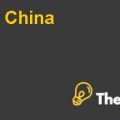ASHMARK CORPORATION: DEALING WITH A SUPPLY DISRUPTION Case Study Solution
Ashmark was a Tier 1 company and it supplied automotive engine components in the market,whereas Red Star was a Tier 11 Company and the supplier of Ashmark. However, Red Star was facing complex situations and went bankrupt due to which Ashmark faced pressure as it was completely depended on their sole supplier for engine components. The customer of Ashmark (OEMs), which was originally an equipment manufacturer became concerned about the performance of Ashmark which now was facing a dilemma of complexities. However, the company had taken several measures and strategies in order to sustain its position. Further, the recommendations were also been given to the company to cope up from the current circumstances.
1. Introduction:
Ashmark a Tier 1 supplier:
Ashmark was a supplier of complex, emission and safety-critical engine component and had built a reputation in the market for having high quality and high technology solutions. Ashmark had accounted global sales of several billion dollars. Ashmark was major Tier 1 automotive supplier in the industry. It had provided engines and machines to several well-known OEM customers. The company had a profitable business in growing market and managed to acquire a greater market share. Ashmark increased its efficiency standards with a large global market production facility. Many major OEMs were dependent on the Tier 1 firms such as Ashmark due to its technical proficiency and efficient manufacturing capabilities. In addition, the OEMs also depended on Tier 1 firms to run the Tier 11 and Tier 111 supply base.
Red Star a Tier 11 Supplier:
Red Star Tier was a foundry and used a traditional casting process but had changed to sinister-looking machinery to speed production process. Red Star’s workers transported large amounts of the molten aluminum by hand in large ladles which had created dangerous, hot and dusty environment for the workers. On the other hand, Red Star owned the molding machines, conveyors and equipment’s, whereas Ashmark owned the tooling which comprised of the molds and core patterns for each specific part.
Red Star was providing quality products at reasonable and competitive prices to Ashmark for years. It had established effective operating practices and expanded its capabilities and resources to better serve the needs of Ashmark.Red Star had expanded its business to finishing machining in order to provide complete partsinstead of only making castings, which also enabled Ashmark to stop its in-house finish machining process. In addition, this also facilitated Ashmark to give its focus on higher-value-added machining, design and assembly while leaving the less value added part of its business.Moreover, prior to Red Star’s bankruptcy, Ashmark had sourced few of its higher volume products from the other suppliers located in the low cost countries, which left Red Star with higher units of lower volume products.
2. What were the key issues with Red Star, Ashmark and their relationship that led to this situation?
Tilden,the new supply chain manager at Ashmark, was shocked due to the poor sales of the company that were less than $10 million per year, which were far less than he expected. Red Start had supplied more than 75% components for Ashmark’s products and consequently 90% of the Red Star businesses were represented by Ashmark. Red Star had competitive prices as compared to local and global competitors due to which Ashmark didn’t want Red Star to increase its prices. Despite this, the previous supply chain manager had negotiated with Red Star to further decrease the prices which would help him to achieve the cost reduction goal. This decrease in the prices had contributed to create a complex situation for Red Star hence, increased the financial pressure.
Louden, the owner of Red Star, had fired 18 accountants before declaring bankruptcy. Red Star had faced a difficult situation and had months of unpaid invoices which came out later by the time Tilden joined Ashmark. Furthermore, Red Star as a private firm didn’t give any sign nor an indication of bankruptcy which made it tricky for Ashmark and other OEMs to recognize the problem. Some banks also granted a loan of several billion dollars to Red Star for the purpose to support its operation and to enable Red Star to expand its building and install more finish machining capacity. The customers of Red Star started to rely on the new suppliers and six months before the bankruptcy, all the customers of Red Star had with drew their tools and stopped their business with the firm.When Tilden joined Ashmark, Red Star demanded to increase the prices up to 15% in order to precede deliveries. However, Ashmark increased their support toRed Star and sent a team of maintenance technicians for the purpose to work on the site and to keep the foundry operational.
In addition, Ashmark also provided financial support to Red Star by lending money each week.Therefore, this gave Red Star aspiration and support to continue its operations by covering aluminum purchases and payroll but ultimately creditors seized the accounts after Ashmark had wired the weekly operating funds. Therefore, after the seizure, Ashmark pushed Red Star to go on the chapter 11 bankruptcy in order to gain enough time to stabilize the company. In the meantime, Ashmark’s tooling was cataloged and stored off site and decided to get the higher volume parts from other suppliers in Mexico and to the tooling was moved to another domestic foundry....................
This is just a sample partial case solution. Please place the order on the website to order your own originally done case solution.












